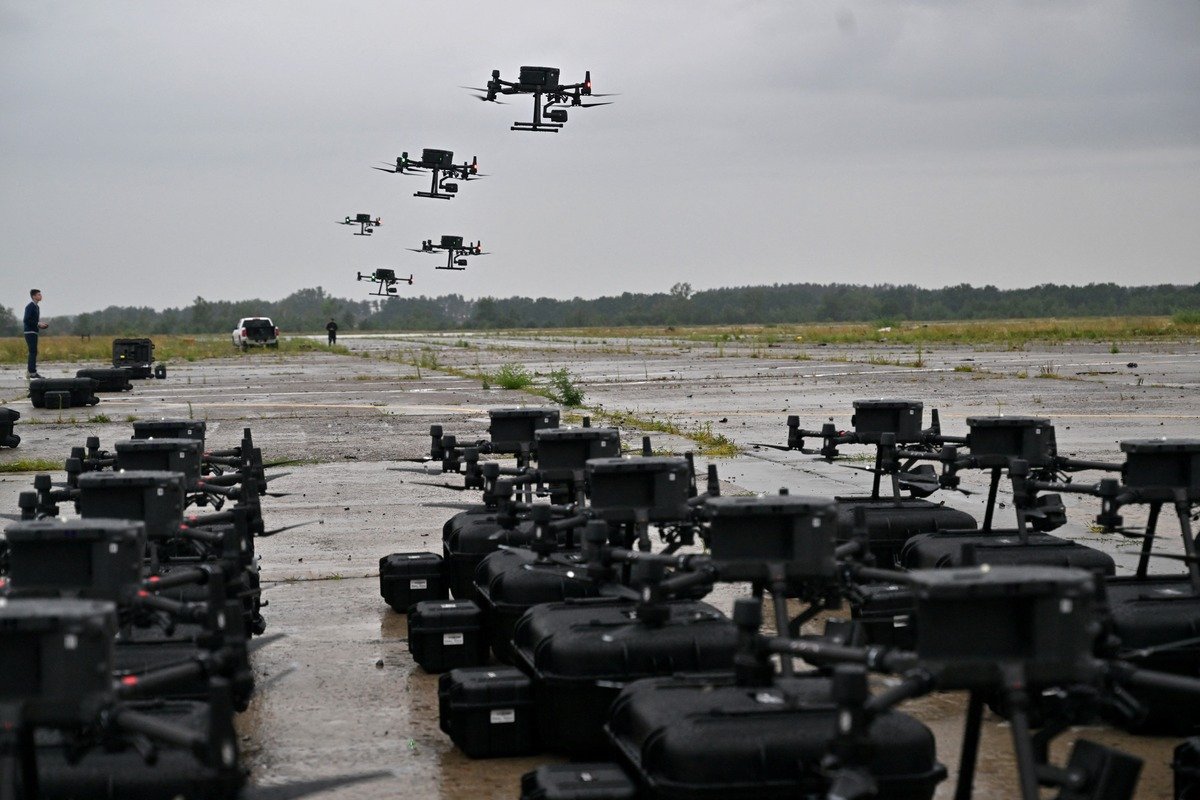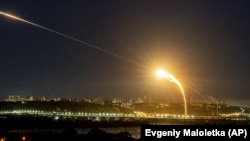Summary
Ukraine has recently carried out a series of attacks targeting Russian strategic early warning radars:
1. On May 23, 2024, a Ukrainian drone substantially damaged a Russian Voronezh-DM radar site in Armavir, in southwestern Russia. Satellite imagery confirmed the attack, which aligns with pictures from the ground that circulated on social media.
2. On May 26, 2024, a Ukrainian drone hit a Voronezh-M radar installation near the city of Orsk, around 1,000 miles (1,600 km) from Kyiv. This was a daring long-distance strike deep into Russian territory.
3. Voronezh radars are Russia's current generation of early-warning over-the-horizon radar systems that provide extended-range monitoring of airspace against ballistic missile attacks and aircraft.
4. The Armavir radar is a Voronezh-DM variant, while the one in Orsk is a Voronezh-M. These radars have ranges of several thousand kilometers and can track hundreds of objects simultaneously.
5. The attacks seem to be part of a systematic Ukrainian effort to blind Russian early warning systems. In late April 2024, a Ukrainian drone strike also damaged a 29B6 Container radar, another unique Russian strategic asset.
6. Experts noted that it is intriguing why Russia keeps such strategic assets unprotected, and suggested that these attacks are designed to degrade Russia's early warning capabilities, potentially enabling Ukraine to strike with greater impunity in the future.
7. However, such attacks on Russia's strategic assets could be seen as crossing a red line and potentially triggering escalation, as they affect Russia's nuclear deterrent posture. Strikes on Russia's early warning network are a serious development in the ongoing conflict.
Why attacks on Russian strategic Voronezh radars have grave implications ? - YouTube
Transcript
Ukraine seems to be systematically targeting Russian strategic early warning sensors. Satellite imagery taken on May 23 confirms a Russian Voronezh-DM radar site in the southwestern end of the country at Armavir was substantially damaged in a reported Ukrainian drone attack. The satellite image aligns with pictures taken from ground level that emerged on social media.
The Armavir attack was followed by a more daring long-distance strike. On May 26, a Ukrainian drone hit a Voronezh-M radar installation near the city of Orsk, which is around 1,000 miles or 1,600 km from Kyiv. In this video, Defense Updates analyzes why attacks on Russian strategic Voronezh radars have grave implications. Let's get started.
Voronezh radars are the current generation of Russian ultra-high-frequency early-warning over-the-horizon radar, providing extended-range monitoring of airspace against ballistic missile attacks and aircraft. It is named after the river Voronezh and follows the same pattern of Soviet radars being named after a river. The first radar of this generation was built in Lekhtusi near St. Petersburg and became operational in 2009. There was a plan to replace older radars with the Voronezh by 2020, but it is unclear if this transition has been made or not. It is estimated that a total of 10 are deployed in various parts of the country, which differ in their operating frequency ranges. Russia had used the launch of these radars to raise its concerns about US missile defense in Europe. At the launch of the Kaliningrad radar in November 2011, Russian President Dmitry Medvedev was quoted as saying, "I expect that this step [the launch of the radar] will be seen by our partners as the first signal of our country's readiness to make an adequate response to the threats which the missile shield poses for our strategic nuclear forces."
There are reports that mention Moscow wanting to build a radar of the Voronezh family in the occupied Crimea. The new radar was supposed to replace one of those Dnepr radars that was located near Sevastopol. At that time, the project was scheduled to be completed by 2024. However, there is currently no confirmation that the Russians have even begun construction of the facility.
Voronezh radar is an Over The Horizon or OTH radar. The frequency of radio waves used by most radars, in the form of microwaves, travel in straight lines. This generally limits the detection range of radar systems to objects on their horizon (generally referred to as "line of sight") due to the curvature of the Earth. OTH radars use various techniques to see beyond that limit. Two techniques are most commonly used: shortwave systems that refract their signals off the ionosphere for very long-range detection, and surface wave systems, which use low-frequency radio waves that, due to diffraction, follow the curvature of the Earth to reach beyond the horizon.
Armavir radar is the second radar of this generation and is a Voronezh-DM radar. In this case, the "DM" means that the radar near Armavir operated in the decimeter radio frequency range. It was designed by NPK NIIDAR and was officially launched back in 2009 and was said to be fully operational in 2015. It has a horizontal range of 6,000 km (3,730 miles) and a vertical range is 8,000 km or 4,970 miles and is capable of simultaneously tracking 500 objects. At a distance of 8,000 km, the radar can detect targets the size of a "football ball". Besides ballistic and cruise missiles, the system is said to be capable of spotting "space objects." According to the publicly available diagram showing the radar's field of view, the Voronezh-DM that was hit covers the Balkans and the Mediterranean, Asia including the Persian Gulf, and also partially covers the Crimean Peninsula.
The radar in Orsk is Voronezh-M. Voronezh-M works in the meter range of wavelengths (VHF) and was designed by RTI Mints. It was reportedly fully operational in December 2017. The performance is expected to be similar to the Armavir sensor. The Voronezh radars are described as highly prefabricated, meaning that they have a set-up time of months rather than years and need fewer personnel than previous generations. They are also modular so that radar can be brought into (partial) operation whilst being incomplete. The Russians have emphasized that the radars of the Voronezh family were more efficient in terms of resources required for building than Soviet Era Dnepr radars. It was noted that while a Dnepr construction took 5–7 years, a single Voronezh radar could be made in under 12–18 months. A Voronezh-M is claimed to cost 2.85 billion rubles and a Voronezh-DM 4.3 billion rubles.
This is not the first time Ukrainians have targeted Russian over-the-horizon radar systems. In late April 2024, a Ukrainian UAV strike successfully hit a critical component of the 29B6 Container radar, a unique asset of which the Russian military possesses only one unit.
It is intriguing why Russia keeps strategic objects of such importance without any air defense cover or if the air defense systems are not able to perform their duties. The attacks seem to be designed to blind the Russian military, which could enable Ukraine to strike with greater impunity in the future. But this type of attack on strategic assets has far-reaching ramifications.
These may be seen as crossing the Red Line and look like meeting the conditions the Russian government laid out publicly in 2020 for actions that could trigger a nuclear retaliatory strike. According to the Basic Principles of State Policy of the Russian Federation on Nuclear Deterrence, which the Kremlin put out two years ago, "The conditions specifying the possibility of nuclear weapons use by the Russian Federation" include any "attack by [an] adversary against critical governmental or military sites of the Russian Federation, disruption of which would undermine nuclear forces response actions." Russia's early warning network is part of the country's broader nuclear deterrent posture and strikes on this are a big deal.
Satellite Images Reveal Aftermath of Strike on Russian Voronezh-M Station
New satellite imagery appears to show the aftermath of a Ukrainian drone attack deep in Russian territory, as Kyiv plugs away targeting Moscow's early-warning radar systems.
Indistinct imagery shared by U.S.-backed Radio Free Europe/Radio Liberty, attributed to American company Planet Labs, appears to show patches of darker spots around a Russian radar station in Russia's Orenburg region after a reported Ukrainian drone strike on the facility.
The apparent damage may be evidence of fire, the outlet said. Newsweek could not independently verify the imagery, and has reached out to the Russian Defense Ministry for comment via email.
Satellite imagery from Orsk, dated Sunday and Monday, shows "new burn marks near the radar system, but the extent of damage to the system is unclear," the Washington-based think tank, the Institute for the Study of War (ISW) said in its latest analysis.
On Monday, Ukrainian media reported that a long-range drone belonging to Kyiv's GUR military intelligence agency attacked a Russian Voronezh-M early warning radar system in the Orenburg region, bordering Kazakhstan, on Sunday.

The radar—located near the city of Orsk, in the east of the region—was more than 1,100 miles away from where the agency launched the explosive drone, an anonymous GUR source told outlet Ukrainska Pravda. The strike set a new "record for the range of destruction for kamikaze drones," the source added.
Russian media reported that a drone had fallen near Orsk, citing law enforcement in the area.
— Українська правда ✌️ (@ukrpravda_news) May 27, 2024"Схеми" опублікували супутникові знімки наслідків атаки на радіолокаційну станцію дальнього виявлення цілей "Воронеж М" в Оренбурзькій області РФ , що знаходиться за 1,8 тис. км від України
ВІДЕО: Проєкт Радіо Свобода "Схеми" pic.twitter.com/vB5KOoG2XY
It was the second reported attack on Russian radars key to Moscow's long-range detection of aircraft and ballistic missile threats in just a few days. Kyiv is continuing to "target Russian long-range early warning radar systems" deep within internationally recognized Russian territory, the ISW think tank said.
Ukraine also targeted a Voronezh-DM radar in Russia's Krasnodar region, east of the Kremlin-controlled Crimean peninsula, on May 22, Reuters reported, citing a Kyiv source.
In mid-April, Russian and Ukrainian sources reported Ukraine had launched a long-range attack on a unique Russian over-the-horizon radar system. Ukrainian media reported that Kyiv's drones had struck a facility housing a 29B6 Container radar system in the Russian republic of Mordovia, citing GUR sources in Ukraine's military intelligence agency. A separate drone attack on the facility was reported around a week earlier.
The 29B6 Container radar is also part of Russia's early warning system for detecting incoming threats from thousands of miles away, such as long-range ballistic missiles. It can track the launches of cruise and hypersonic missiles and the takeoff of aircraft from up to around 1,860 miles away, according to Russian state news agency Tass.




































No comments:
Post a Comment